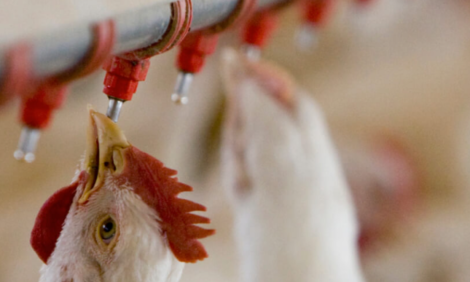



Foundations of Empathy Found in Chicken
UK - A study has gained new insight into the minds of domestic hens, discovering, for the first time, that domestic hens show a clear physiological and behavioural response when their chicks are mildly distressed.The research by academics at the University of Bristol’s Animal Welfare and Behaviour research group in the School of Veterinary Sciences, and funded by the BBSRC Animal Welfare Initiative, is published online in the Proceedings of the Royal Society B.
The study is the first to demonstrate that birds possess one of the important attributes that underpins empathy, and the first study to use both behavioural and physiological methods to measure these traits in birds.
Using a well-controlled experimental procedure and making use of technical advances in non-invasive physiological monitoring, the researchers found that domestic hens show a clear physiological and behavioural response to their chicks’ distress.
During one of the controlled procedures, when the chicks were exposed to a puff of air, the hens’ heart rate increased and eye temperature decreased. The hens also changed their behaviour, and reacted with increased alertness, decreased preening and increased vocalisations directed to their chicks.
Some of these responses have previously been used as indicators of an emotional response in animals. In domestic chickens, time spent standing alert is associated with higher levels of fear. Previous research carried out by the same group has shown that hens also selectively avoid surroundings associated with high levels of standing and low levels of preening.
Jo Edgar, PhD student in the School of Veterinary Sciences, said: “The extent to which animals are affected by the distress of others is of high relevance to the welfare of farm and laboratory animals.
“Our research has addressed the fundamental question of whether birds have the capacity to show empathic responses.
“We found that adult female birds possess at least one of the essential underpinning attributes of ‘empathy’; the ability to be affected by, and share, the emotional state of another.”
The researchers used chickens as a model species because, under commercial conditions, chickens will regularly encounter other chickens showing signs of pain or distress due to routine husbandry practices or because of the high levels of conditions such as bone fractures or leg disorders.








